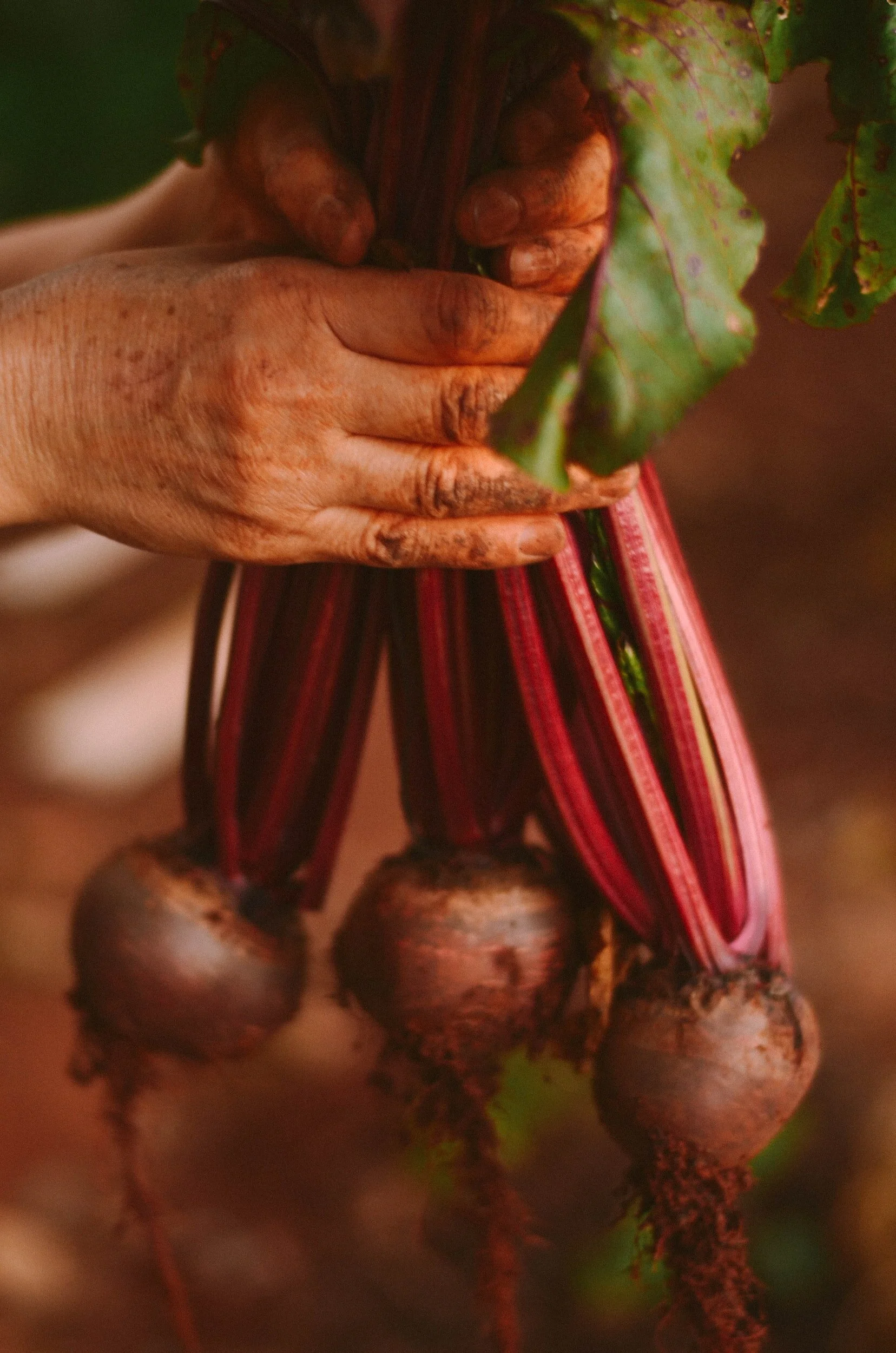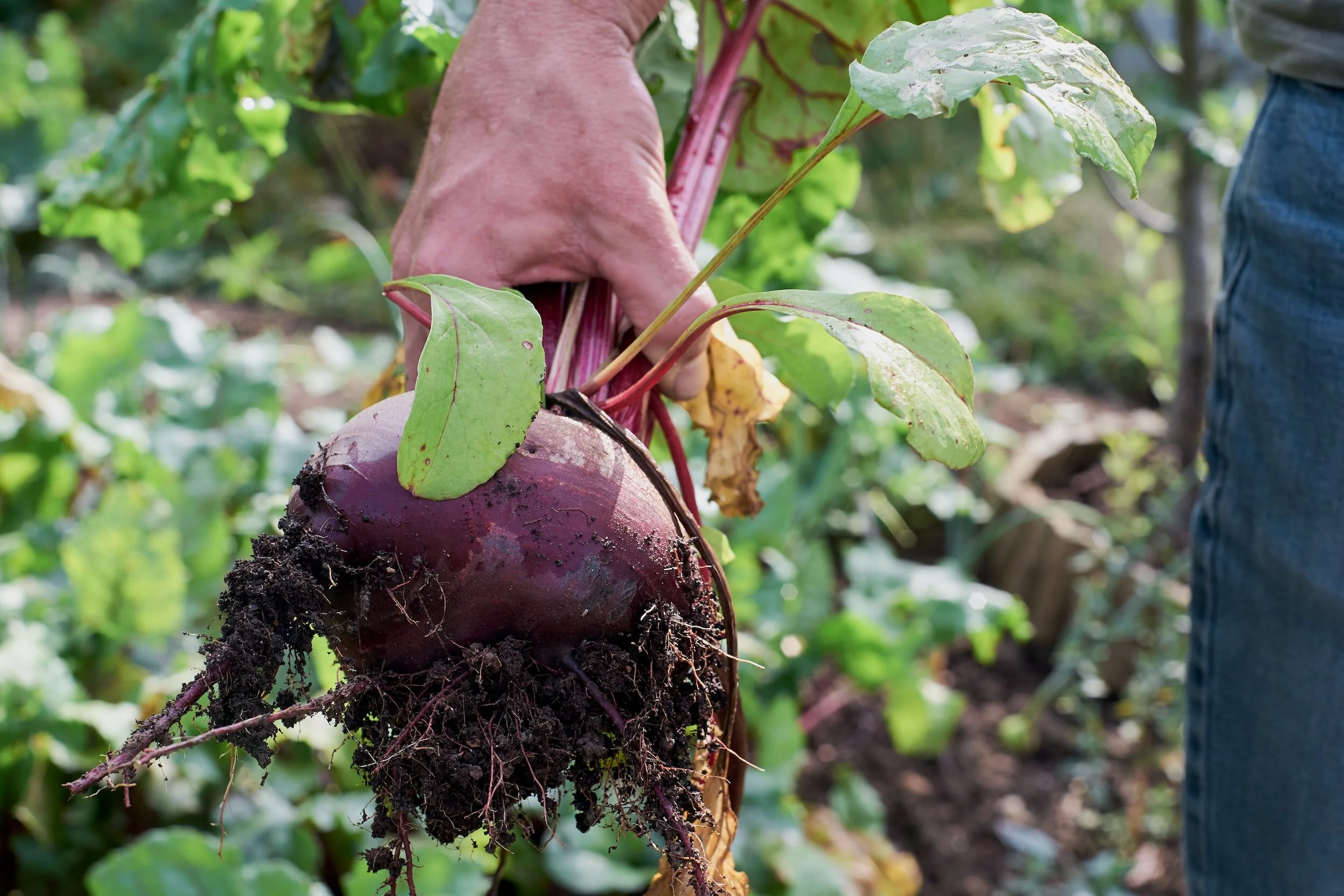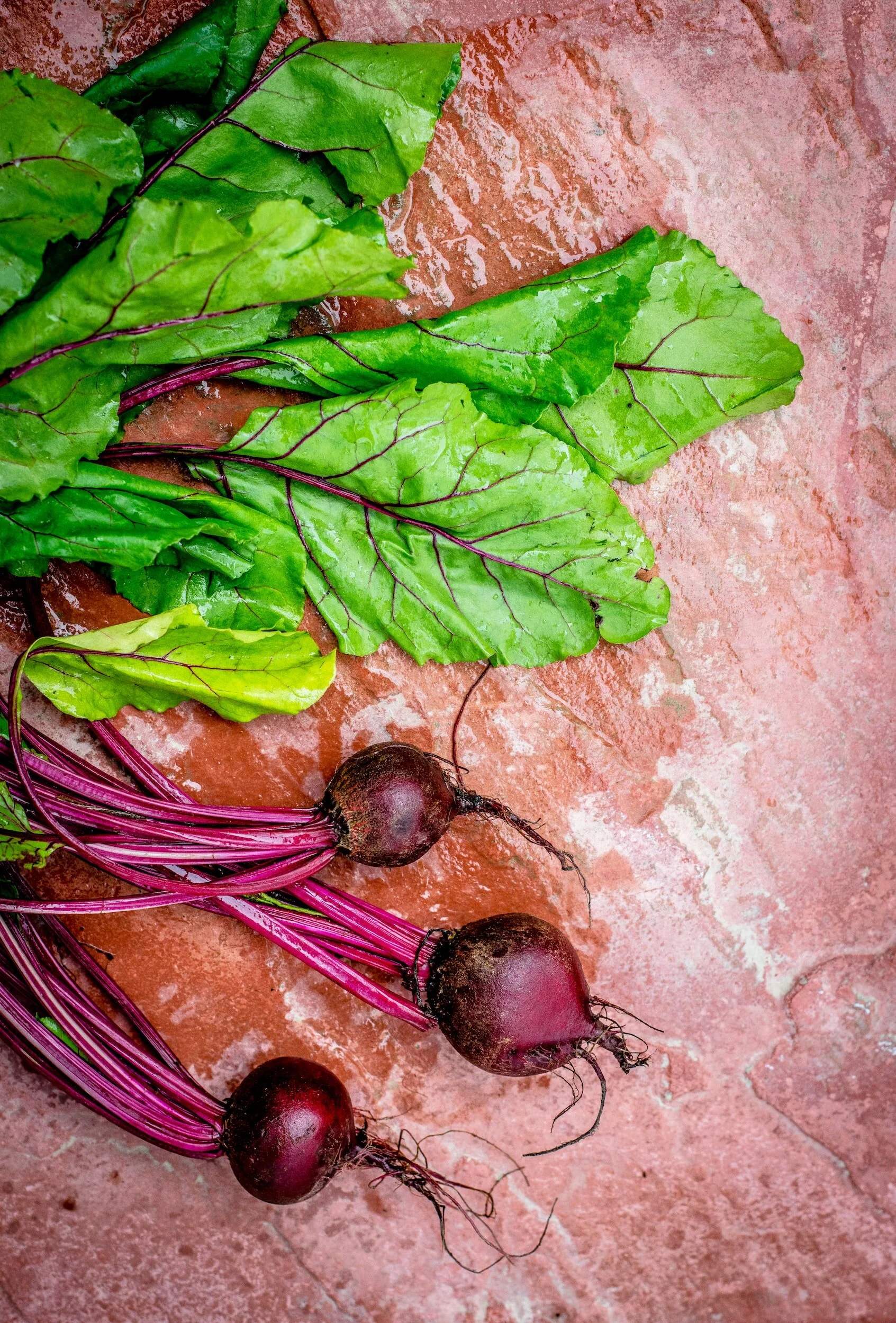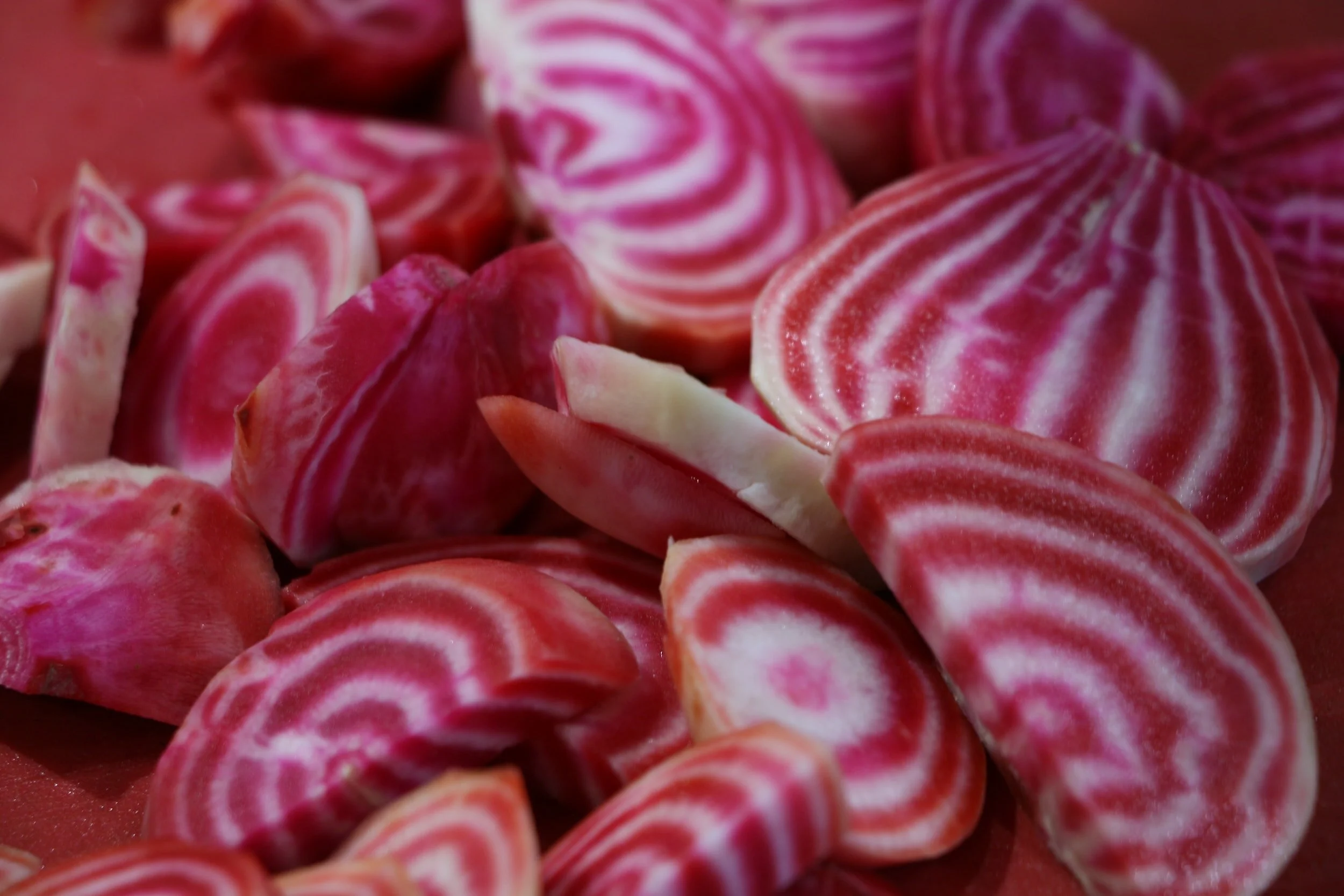When to Harvest Beets
This article has links to products that I may make commission from.
Growing beets in the garden is a really fun way to enjoy the freshness and flavors of these versatile root vegetables.
Whether you're growing them for their roots or their nutritious greens, knowing the optimal time to harvest beets is essential for achieving the best taste and texture.
In this comprehensive guide, we will delve into the intricacies of beet harvesting, providing you with the knowledge and tips you need to ensure a successful and satisfying harvest.
From understanding the signs of readiness to learning different harvesting techniques and exploring storage options, this guide will equip you with the expertise to make the most of your beet-growing journey.
To learn more about growing beets, check out my guide:
How to harvest Beet Greens
Beet greens, with their tender and nutritious leaves, can be harvested throughout the growing season.
Here's how you can effectively harvest beet greens:
Start with mature beet plants:
Allow your beets to grow until they reach a height of 4-6 inches or until the leaves are large enough to harvest.
Choose the right time of day:
Harvest beet greens in the morning when the leaves are crisp and hydrated, offering the best flavor and texture.
Harvest outer leaves:
When harvesting beet greens, begin by gently removing the outer leaves.
Use a sharp knife or scissors to cut the leaves close to the base of the plant.
Be careful not to damage the central growth point or the smaller inner leaves.
Leave inner leaves intact:
To ensure the continued growth of the plant, leave the center of the beet plant and the smaller inner leaves untouched.
This allows for sustained photosynthesis and the production of new leaves.
Ongoing harvesting:
As the beet plant continues to grow, you can harvest additional outer leaves as needed, ensuring a steady supply of fresh greens throughout the season.
My recommended beet varieties:
Detroit Dark Red:
Unbeatable beets.
Perfect picked at 3" these are dark-red and have extremely sweet flesh.
Golden Detroit:
This variety of yellow beet seeds has a bright color that I love.
Ruby Queen Beet Seeds:
The Ruby Queen beet is mild and sweet in flavor.
Ring-less roots can and pickle well.
Retains color during processing.
For more tips on when to harvest vegetables in your garden, check out my guides:
How to Harvest beetroot
For harvesting beetroot, you have two options:
Baby beets:
If you prefer smaller beets, you can harvest them when they are about 1-2 inches in diameter, about the size of a golf ball.
These baby beets are tender and have a milder flavor.
Mature beets:
If you prefer larger beets, you can wait until they reach 2-3 inches in diameter.
These beets will have a more robust flavor and texture.
When it comes to harvesting beetroot, proper technique ensures minimal damage and maximizes the quality of your harvest.
Follow these steps to effectively harvest beet roots:
Timing:
Beets are typically ready for harvest when they have reached the desired size, as indicated earlier.
The average size for mature beets is around 2-3 inches in diameter, while baby beets can be harvested at 1-2 inches in diameter.
Refer to the specific variety guidelines for more accurate sizing information.
Soil moisture:
Before harvesting, ensure that the soil around the beets is moist.
Watering the area a day before harvesting can help loosen the soil and make it easier to lift the beets.
Loosening the soil:
Gently loosen the soil around the beets using a garden fork or trowel.
Insert the tool about 3-4 inches away from the plant's base and carefully pry the soil upward to loosen it.
Take care not to damage the beet roots in the process.
Lifting the beets:
Once the soil is loosened, grasp the beet greens near the base of the plant and pull upward steadily.
The beet roots should come out of the ground with minimal resistance.
If the greens are difficult to detach, you can use a garden fork to further loosen the soil around the beets.
Trimming the greens:
After harvesting, trim the beet greens, leaving about an inch of stem attached to the beet root.
This helps prevent excess moisture loss during storage and improves the beet's shelf life.
Ready to harvest more from your garden?
Check out my harvest guides:
When to Pick Carrots: The Comprehensive Guide
The Art of Harvesting Tomatoes: When and How to Pick the Perfect Fruit
How to know when to harvest beets
Knowing when to harvest beetroot is essential to ensure they are at their peak flavor and texture.
Here are some indicators to help you determine how to tell when beets are ripe:
Size
Beets come in various sizes, depending on the variety and your preferences.
As a general guideline, baby beets are typically harvested when they reach 1-2 inches in diameter, while mature beets are around 2-3 inches in diameter.
Refer to the specific variety information or seed packet for more accurate size recommendations.
Appearance
Look for beets with smooth, firm skins and vibrant colors.
Beets ready for harvest should have skin that is free from blemishes, wrinkles, or soft spots.
Avoid beets that show signs of damage or decay.
Time
Beets have a specific growing period, usually taking between 50 to 70 days to reach maturity, although this can vary depending on the variety and growing conditions.
To determine when your beets are ready for harvest, check the seed packet or variety information for the expected maturity time.
Keep in mind that growing conditions can affect the actual harvest date, so it's important to observe the beets closely.
Beet greens
If you primarily grow beets for their greens, you can start harvesting the outer leaves when they reach a height of 4-6 inches.
Continual harvesting of the greens may impact the growth of the root, so consider balancing between harvesting the greens and allowing the roots to develop.
Taste test
To determine the readiness of your beets, you can perform a taste test.
Gently pull up one beet from the soil and taste a small portion.
Younger beets will have a milder, sweeter flavor, while mature beets tend to be more robust and earthy.
Adjust your harvesting time based on your preferred taste profile.
Remember that personal preference plays a role in determining when to harvest beets.
Some individuals prefer smaller, tender beets, while others prefer larger, more substantial roots.
Observing the size, appearance, time, and taste of the beets will help you make an informed decision about when to harvest and enjoy the fruits of your gardening labor.
Equip your urban green space with my recommend top tier tools.
How to harvest beets from the garden
Follow these steps for a successful beet harvest:
Prepare for harvest
Before you begin harvesting, gather the necessary tools, including a garden fork or trowel, a pair of gardening gloves, and a clean container or basket to collect the harvested beets.
Timing
Ensure that your beets have reached the desired size for harvesting, as indicated earlier.
Check the seed packet or variety information for specific guidelines on the expected maturity time for your beets.
Loosen the soil
Using a garden fork or trowel, gently loosen the soil around the beet plants.
Insert the tool about 3-4 inches away from the plant's base and carefully pry the soil upward to loosen it.
Be cautious not to damage the beet roots in the process.
Lift the beets
Once the soil is loosened, grasp the beet greens near the base of the plant and pull upward steadily.
The beet roots should come out of the ground with minimal resistance.
If the greens are difficult to detach, you can use a garden fork to further loosen the soil around the beets.
Trim the greens
After lifting the beets, trim the beet greens, leaving about an inch of stem attached to the beet root.
This helps prevent excess moisture loss during storage and improves the beet's shelf life.
Inspect the beets
Examine the harvested beets for any signs of damage, disease, or deformities.
Remove any damaged or diseased beets from the batch, as they may affect the quality of the remaining harvest.
Clean the beets
Gently brush off any excess soil clinging to the beets using your hands or a soft brush.
Avoid washing them at this stage, as moisture can promote spoilage during storage.
For more vegetable gardening tips, check out my guides:
When to harvest beets in containers
Harvesting beets grown in containers follows similar guidelines as harvesting beets grown in traditional garden beds.
However, there are a few considerations specific to container-grown beets.
Here's a guide on when to harvest beets in containers:
Size and maturity
Determine the desired size of the beets you want to harvest.
The general rule of thumb is that baby beets are typically harvested at 1-2 inches in diameter, while mature beets reach around 2-3 inches in diameter.
Refer to the specific variety guidelines or seed packet for more accurate size recommendations.
Days to maturity
Check the seed packet or variety information for the estimated days to maturity.
This information will give you an idea of the approximate time it takes for your beets to reach harvest readiness.
However, keep in mind that growing conditions, such as sunlight, temperature, and container size, can affect the actual harvest timeline.
Visual cues
Observe the appearance of the beet plants.
Look for healthy, well-developed foliage and vibrant colors.
The beets should have smooth, firm skins without blemishes or soft spots.
Additionally, the beet greens should be full and lush.
Test the readiness
Perform a taste test to assess the flavor and tenderness of the beets.
Gently pull up one beet from the container, wash it, and taste a small portion.
Younger beets will be milder and sweeter, while mature beets tend to have a more robust and earthy flavor.
Harvest the beets according to your taste preferences.
Continuous harvest
If you have planted beets in successive plantings or multiple containers, you can stagger the harvest to enjoy a continuous supply of fresh beets.
Harvest the beets at different stages of maturity to ensure a variety of sizes and flavors.
When container gardening, it's important to monitor the moisture levels and ensure the container has proper drainage to prevent overwatering.
Beets grown in containers may require more frequent watering compared to those in the ground.
By considering these factors and following the general guidelines for beet harvest, you can determine the ideal time to harvest your beets grown in containers.
Enjoy the process and the delicious rewards of your container gardening efforts.
For more vegetable garden inspiration:
How to harvest beets for storage
Storing beets properly after harvest helps extend their shelf life and preserves their flavor and quality.
Here's a step-by-step guide on how to store beets:
Prepare the beets
After harvesting the beets, gently brush off any excess soil clinging to the roots.
Avoid washing them at this stage, as moisture can promote spoilage during storage.
Remove the greens
Trim the beet greens, leaving about an inch of stem attached to the beet roots.
This prevents the greens from drawing moisture away from the roots and helps the beets retain their freshness.
Sort and inspect
Inspect the harvested beets for any signs of damage, disease, or soft spots.
Remove any damaged or diseased beets from the batch, as they may affect the quality of the remaining beets during storage.
Choose a storage method
There are a few options for storing beets after harvest:
Root cellar
If you have access to a root cellar, it provides an ideal environment for storing beets.
The temperature should be around 32°F to 40°F (0°C to 4°C) with high humidity.
Place the beets in boxes or crates filled with damp sand or sawdust maintain moisture levels.
Ensure that the beets do not touch each other to prevent rotting.
Refrigerator
If you don't have a root cellar, you can store beets in the vegetable crisper drawer of your refrigerator.
Place the beets in perforated plastic bags or wrap them in damp paper towels to maintain humidity.
Aim for a temperature between 32°F to 40°F (0°C to 4°C).
Cold storage in the ground
Alternatively, you can store beets directly in the ground if your climate allows it.
Before the ground freezes, carefully dig a trench in a well-drained area and place the beets in layers, separated by damp sand, sawdust, or straw.
Cover the beets with soil and a layer of straw or mulch for insulation.
Retrieve the beets as needed throughout the winter.
Usage
Stored beets can typically be used for several months.
Plan your meals to incorporate the stored beets and enjoy them in various recipes like roasted beets, salads, soups, or pickled beets.
By following these steps, you can store your harvested beets properly and enjoy their fresh flavors even after the growing season.
Proper storage helps maintain their quality, ensuring that you have a supply of homegrown beets for an extended period.
Grow more veg with my guides:
Wrap-Up
Harvesting beets at the right time ensures that you can enjoy the full flavor and benefits of this versatile root vegetable.
By considering factors such as size, appearance, time, and taste, you can determine when your beets are ready to be harvested from both gardens and containers.
When it comes to harvesting beets, remember to handle them with care to avoid bruising or damaging the roots.
Whether you're harvesting beet greens for their leafy goodness or digging up the beet roots for culinary delights, the process requires attention and gentle techniques.
After harvesting, proper post-harvest handling and storage are crucial for preserving the quality and extending the shelf life of beets.
Whether you choose to store them in a root cellar, refrigerator, or even in the ground, maintaining the right temperature, humidity, and air circulation will help keep your beets fresh for an extended period.
With the knowledge of how and when to harvest root crops like beets, you can confidently cultivate these nutritious and flavorful vegetables in your own garden.
So, roll up your sleeves, get your hands in the soil, and experience the joy of growing and harvesting your own beets.
From garden to plate, savor the rewards of your efforts and enjoy the delicious and nutritious beets that you have nurtured from seed to harvest.







































